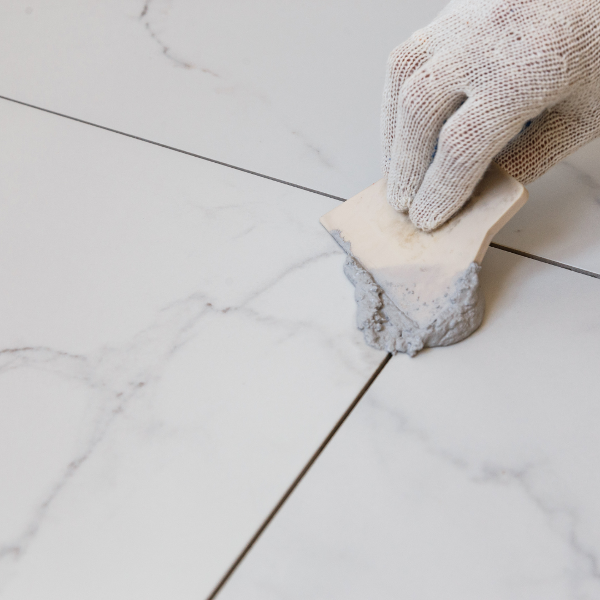Blog > Understanding the Basics of Flooring Grout
Understanding the Basics of Flooring Grout
Monday, June 10, 2024

Flooring grout is a critical component in tiling projects, used to fill the spaces between tiles. It not only holds tiles in place but also prevents dirt and debris from getting between or underneath them. Here are the basics of flooring grout:
Types of Grout
Cementitious Grout
- Unsanded Grout: Used for narrow joints less than 1/8 inch wide. It's smooth and often used for wall tiles and polished stone.
- Sanded Grout: Contains fine sand and is used for wider joints, typically 1/8 inch to 1/2 inch. It's more durable and resistant to cracking.
Epoxy Grout
Made from epoxy resins and a filler powder, epoxy grout is highly durable, stain-resistant, and impermeable to water. It's ideal for areas exposed to harsh conditions, like kitchens and bathrooms, but is more challenging to work with and more expensive.
Furan Grout
Similar to epoxy grout but made from polymers of furfuryl alcohol. It's highly resistant to chemicals and heat, making it suitable for industrial applications. It requires precise mixing and installation.
Components of Grout
Binder
The primary material that holds the grout together. In cementitious grout, this is usually Portland cement.
Aggregate
Sand or other fine particles added to give body and prevent shrinking and cracking.
Additives
Chemicals that improve performance, such as polymers for flexibility or coloring agents.
Properties of Grout
Durability
Grout needs to withstand the traffic and conditions of the environment where it's installed.
Stain Resistance
Important for maintaining appearance, especially in areas prone to spills.
Color
Available in various colors to match or contrast with the tiles.
Shrinkage
Minimal shrinkage is essential to prevent gaps from forming as the grout cures.
Water Resistance
Critical for wet areas like bathrooms and kitchens.
Preparation and Application
Surface Preparation
Ensure that the tiles and joints are clean and free of debris. The surface should be dry and stable.
Mixing
Follow the manufacturer's instructions for the correct water-to-grout ratio. Mix until smooth and consistent, avoiding lumps.
Application
Use a grout float to press the grout into the joints at a 45-degree angle, ensuring all spaces are filled completely.
Cleaning
Wipe off excess grout from the tile surfaces with a damp sponge. Rinse the sponge frequently to avoid smearing.
Curing
Allow the grout to cure as per the manufacturer's instructions. This usually involves keeping the grout damp for a specific period.
Maintenance
Sealing
Cementitious grout should be sealed after curing to protect it from stains and moisture. Epoxy and furan grouts typically don't require sealing.
Cleaning
Regular cleaning with appropriate products will maintain the appearance and integrity of the grout.
Repair
Cracks or gaps should be repaired promptly to prevent further damage and moisture ingress.
Common Problems and Solutions
Cracking
Often caused by movement in the substrate or improper mixing. Use flexible additives and ensure proper installation.
Staining
Use sealed grout in stain-prone areas and clean spills immediately.
Efflorescence
White residue caused by water soluble salts. Prevent by proper curing and using appropriate cleaning methods.
Understanding these basics will help you choose the right grout for your project and ensure a durable and attractive tiled surface. Need help? Let Jason’s Carpet & Tile lend a hand! Call us today at 954-231-4487.
